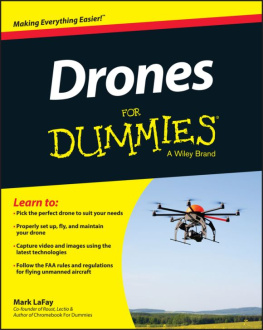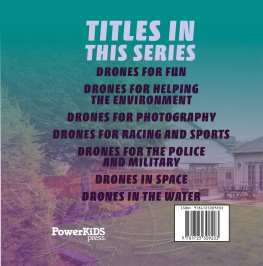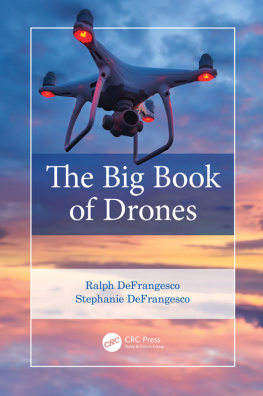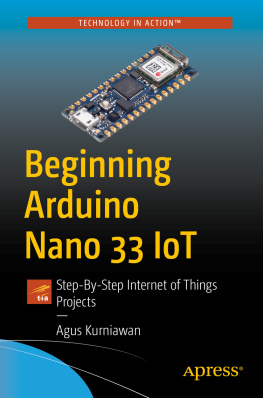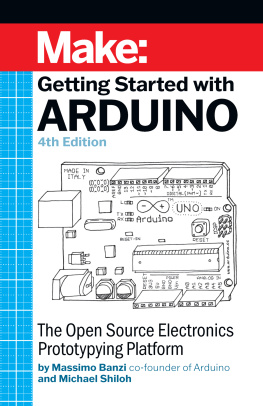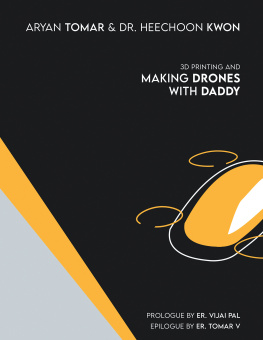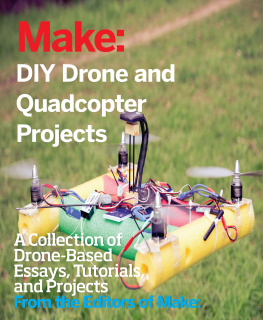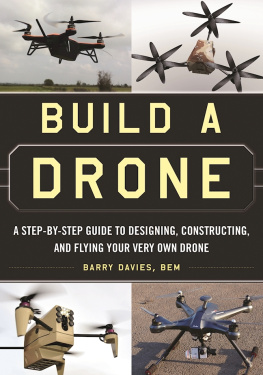Success
The successful people I have known all seem to have gotten there by some personal mix of talent, luck, and work. I hope that the mix turns out right in this book and that I succeed in inspiring you to make something. It will probably be a drone, but if its a great new garage door opener, Ill count that as a success as well.
I have put my unique talents into this book, as you will into your project. I was born with a soldering iron in my hand, or almost, thanks to my fathers ham radio hobby. Also, largely due to his efforts, I started finding things to program when I was still a kid. I happen to love mathematics, which has served me well as a coder, of course. And there are several pilots on my fathers side of the family. But there are other threads in my life that led to drones.
From my mothers side I get music. My love of music and my love of gear came together in recording technology. This led to computer audio and digital signal processing. And now we get back around to drones. Many of the very same algorithms I have coded for audio processing get used in drones to process sensor data and control inputs.
Add in some professional experience doing consulting in the control systems business, and perhaps you can see why I love building drones. It all comes togetherbuilding electronics, flying, radios, programming, signal processing. But there was also some luck involved in the creation of Make: Drones.
My old friend Tim Deagan was working on his book, Make: Fire, and I shot some drone video of his fire projects. Then Roger, who would become our mutual editor, said, Drones are hot, send me a book proposal on drones, so I did.
Then there is the work. And I dont just mean mine. Roger Stewart makes all those things happen that turn a bunch of files into a book on a shelf. Ron Parsons has saved me from many an error as technical editor. He also let me play on his Processor Technology Sol personal computer when I was a kid, giving me one of my very first programming experiences. And without the constant support of my wife, Marva, and kids, Stella and Sean, the production and marketing teams would never have had anything to work on.
The real success, of course, is not just a book on a shelf. I hope that this book inspires you to make something that pulls the threads of your life together. I hope that this book helps you see that even something as complex as a drone control system can be broken down into fundamental, understandable parts. Over and over we see that the same technologies that make a drone fly make many of our other modern gadgets possible. I hope that they will make your project fly, figuratively and perhaps literally.
Small, Medium, Large
You can divide this book into three sections, as drones nicely divide themselves into small, medium, and large based mostly on their motors. Small drones use brushed motors directly connected to small props. Medium-sized drones use the same 6- to 8-millimeter motors, but gear them down in order to use larger, more efficient props. Large drones use brushless motors and electronic speed controllers. Each of these classes can actually vary greatly in size, but the general trend holds true.
In Chapters we work with small drones. First we take some measurements and try to improve the performance of an existing small drone, the Hubsan X4C. Then we build a new small drone using a Hubsan frame and an open source flight controller. Its called the X4Wii since it uses an X4 frame and MultiWii flight control code.
Chapters cover the construction of a medium-sized drone. Once again we start with the frame from an existing drone, the Syma X5. We use an Arduino Teensy 3.2 as the core of our new flight control system, adding modules for power, sensors, and radios. A custom circuit board ties it all together. Finally, so that people can see this new custom controller, we put a clear lid on it and call this project the Visible Drone.
In Chapters we build a large drone, based on the S500 frame kit. For flight control, this one uses the powerful Pixhawk Lite controller and ArduCopter flight control software. Combined with a high-performance GPS unit, this system can fly completely autonomous missionsand it has the power to carry a useful payload while doing it. This one will make a great aerial photography platform.
Having talked about what makes current drones possible in the first few chapters, we will look at the future of drones in the last few. Researchers and hobbyists alike continually push the limits of drones with new sensors and ever more sophisticated software. Be a part of this future and make a drone!
Conventions Used in This Book
The following typographical conventions are used in this book:
ItalicIndicates new terms, URLs, email addresses, filenames, and file extensions.
Constant widthUsed for program listings, as well as within paragraphs to refer to program elements such as variable or function names, databases, data types, environment variables, statements, and keywords.
Note
This element signifies a general note, tip, or suggestion.
Warning
This element indicates a warning or caution.
Using Code Examples
Supplemental material (code examples, exercises, etc.) is available for download at http://www.makedronesbook.com.
This book is here to help you get your job done. In general, if example code is offered with this book, you may use it in your programs and documentation. You do not need to contact us for permission unless youre reproducing a significant portion of the code. For example, writing a program that uses several chunks of code from this book does not require permission. Selling or distributing a CD-ROM of examples from Make: books does require permission. Answering a question by citing this book and quoting example code does not require permission. Incorporating a significant amount of example code from this book into your products documentation does require permission.


